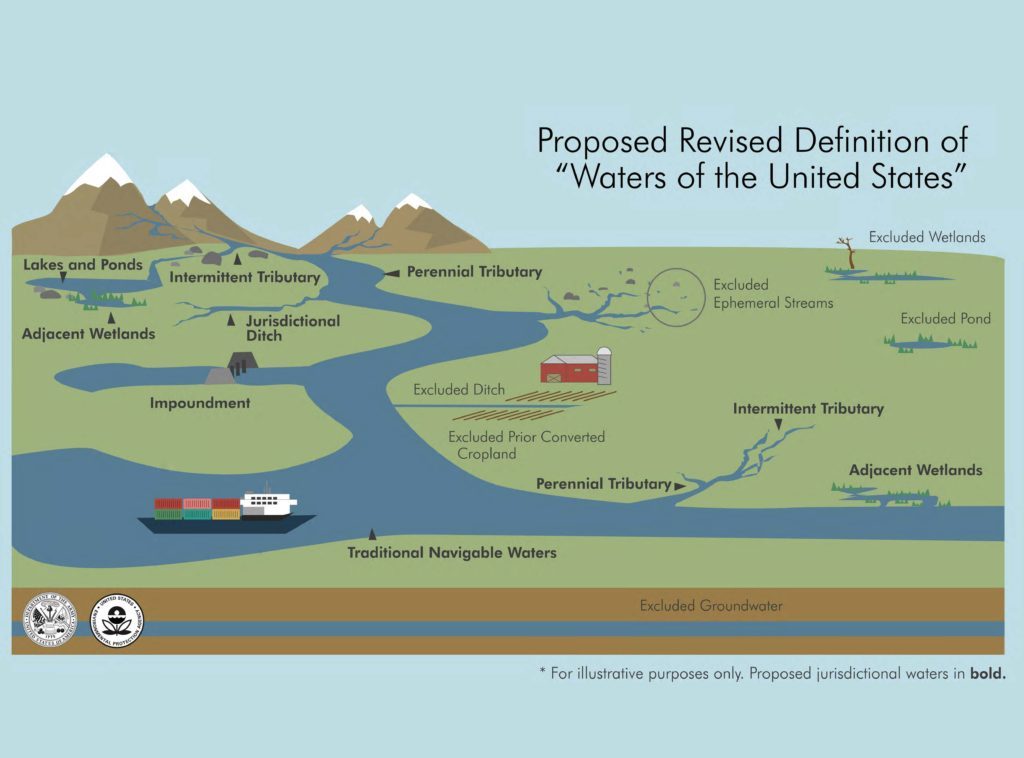What’s Going on with WOTUS?
May 02, 2019
Last year, Blackstone shared an article explaining that the definition of the waters of the United States (WOTUS) was in limbo. The 2015 Clean Water Rule attempted to provide a clearer definition of WOTUS but has been under numerous court challenges. The Environmental Protection Agency (EPA) and the Army Corps of Engineers (the Corps) published a proposal to rescind the Clean Water Rule in July 2017, and in February 2018, finalized a delay of the effective date of the Clean Water Rule to February 6, 2020 (the Applicability Date Rule) while they worked on a new rule to replace it. A year later we are still in limbo without a clear definition, but with one on the way.
Over the past year there have been lawsuits over the Applicability Date Rule, a court case ruling that delay of lawsuits opposing the 2015 Clean Water Rule were unwarranted, a nationwide injunction issued for the Applicability Date rule, a court vacatur of the Applicability Date rule, court cases halting the Clean Water Rule from taking effect bringing the rule to a halt in a total of 24 states, and the EPA Administrator issuing a memo making himself the sole authority over WOTUS designations, revoking the authority of regional administrators.
Proposed WOTUS Rule
In February 2019, EPA and the Corps published a proposed rule revising the definition of WOTUS (WOTUS Rule). The proposal seeks to limit the definition of WOTUS by removing the process of determining “significant nexus” as directed under the agencies’ 2008 Rapanos Guidance. This is expected to exclude ephemeral waters (streams and ditches) that flow in response to rain and addressing protected wetlands as those only that abut or have a direct hydrological surface connection to jurisdictional waters. Wetlands physically separated from a jurisdictional water by a berm, dike, or other barrier are not considered adjacent without a direct hydrologic surface connection.
The public comment period on the proposed rule closed on April 15, 2019. EPA provided a Fact Sheet outlining the revised definition of WOTUS and an infographic that provides an illustration depicting waters included and excluded from the definition. EPA and the Corps have not indicated how many ephemeral streams and wetlands they expect to be affected by this definition.

What definition is currently applicable?
In March 2019, the federal government withdrew appeals regarding the enjoin and vacatur of the Applicability Date Rule, meaning that they will no longer defend the rule in court. Until the proposed WOTUS Rule is finalized, the lower court decisions will stand and the 2015 Clean Water Rule is in effect in some states and the pre-2015 regulations are in effect in others. EPA and the Corps recognize the confusion this may create and have put together a map to outline which states are following each definition.

Other Related WOTUS Actions
December 2018 – Rand Paul introduced a bill to amend the Clean Water Act to define the term WOTUS as only waters that are “navigable in fact” or have permanent, standing or continuously flowing water. The bill would go beyond the proposed rule that excludes ephemeral waters to exclude intermittent streams as well. The bill is currently referred to the Senate Environment and Public Works Committee.
April 2019 – Using the authority given to states and tribes to regulate waters within their borders, California adopted new wetlands regulations to define wetlands and clarify requirements for permit applications to discharge dredged or fill material to any waters of the state.